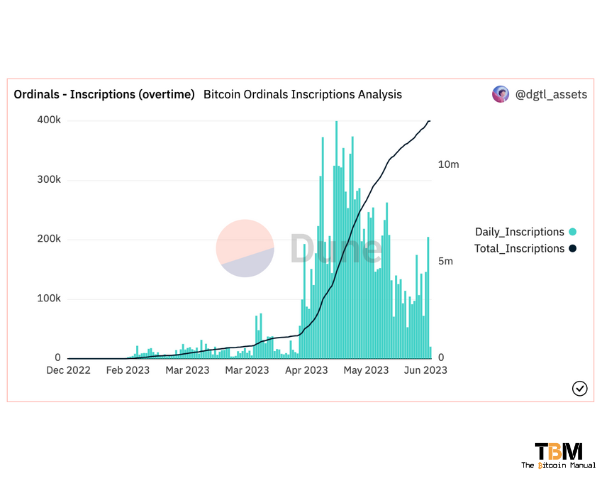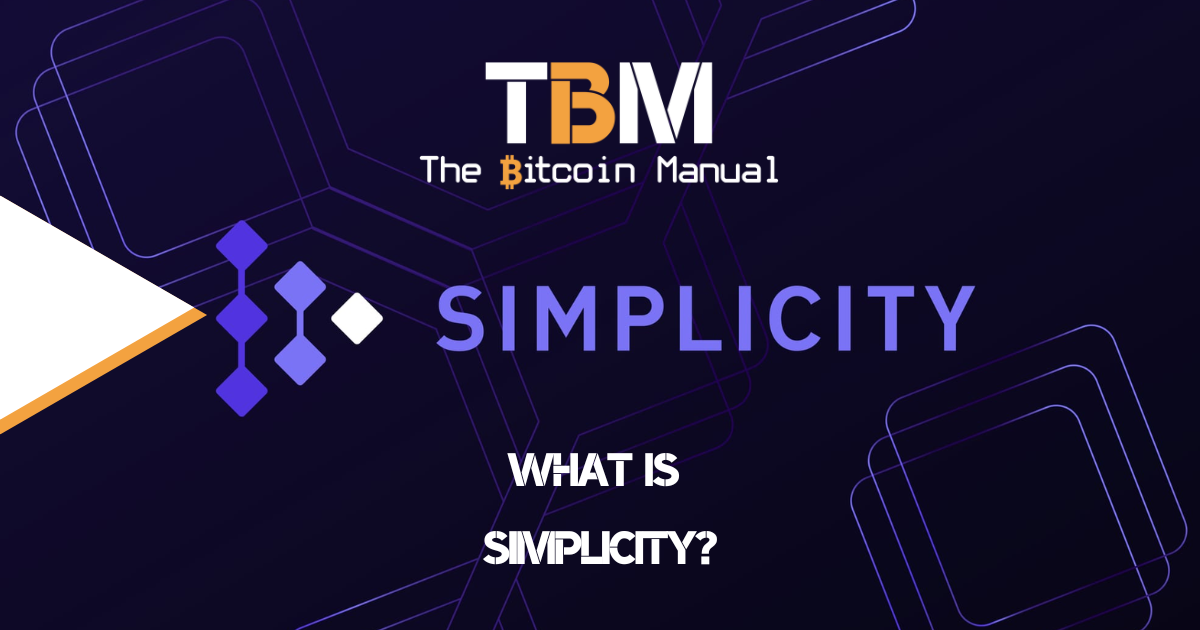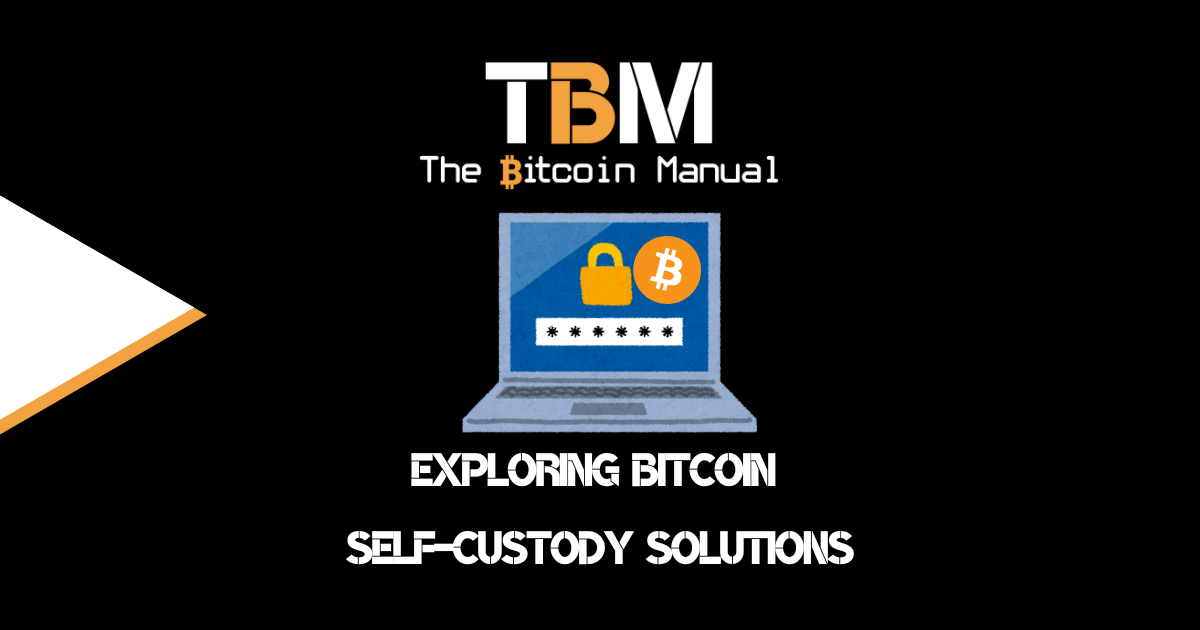Bitcoin Ordinals and Inscriptions are branded a new way to use the Bitcoin blockchain, but it’s really an old idea that has been re-hashed on the chain and takes advantage of the SegWit discount.
They are the latest evolution of the coloured coins idea and allow users to inscribe data, such as images, text, or videos, onto the Bitcoin blockchain and ascribe the file a serial number and reference that serial number to individual satoshis. If you’re thinking, well, this could easily be done with a database, you would be right, but the appeal of Ordinals and Inscriptions is that it is expensive and clunky to use to make it seem like you are a shadowy super-coder when really all you are is the next round of exit liquidity.
Another reason why a certain cohort claims arbitrary data can have a value by adding it on a blockchain is through the idea that this data is stored permanently on the blockchain, making it immutable and verifiable if you’re looking at the blockchain through third-party indexers because Bitcoin’s consensus doesn’t really recognise these files, only the transactions attached to them.
Despite the costs involved in creating these transactions, Ordinals have grown in popularity recently. The market for ordinals is now worth millions of paper dollars as it relies on illiquid markets to hold up a make-believe market cap of NFTs and Altcoins.
Since we’re in a bear market, this narrative has seen plenty of opportunists jump into the Ordinals space, and a growing number of projects are being built using this new protocol. The most popular uses for ordinals are creating digital collectables and issuing unregistered securities, primarily meme coins and pump-and-dump schemes in the form of BRC-20 and ORC-20 tokens.

A brief history of Ordinal hype cycles.
In the short history of Ordinals, we can see a first round of interest, which captured a community of NFT enthusiasts wanting to purchase block space to store their monkey JPEGs. The novelty of putting files in the Bitcoin blockchain would only carry so far, and since it was limited to 4MB files, there was a hard cap on what you could do with these images and files. The demand was eventually diluted and drowned out, and a new narrative had to take over.
The next round of interest, ironically, came from using the block space more effectively by embedding text that held a JSON file, which would represent a token, and this kicked off a brief token mania, which is still going but has trended downward as the initial excitement of minting tokens on Bitcoin waned.
As you can tell, from this brief history, like any altcoin project, Ordinals and Inscriptions constantly need a new feature and narrative to maintain and grow interest. As the technology continues to develop and the ability to profit from naive investors remains, we can expect to see even more uses to try and attract capital and users into investing in these so-called assets.
The latest idea off the assembly line of Ordinal theory to “invest” in comes in the form of Recursive Inscriptions.
Keeping the hype train going
The Ordinals’ shills and so-called community mindlessly backing these projects are abuzz with the emergence of something called Recursive Inscriptions, not to be confused with recursive covenants, which would actually be part of Bitcoin consensus if soft forked in sometime in the future.
As you can imagine, the market for up to 4MB files on the Bitcoin blockchain is fairly small in the grand scheme of things, there are only so many people who want to collect pixelated images hoping to sell them for a profit in the future, so the next step would either be to find better ways of using that 4MB of data for the transaction fees you’re paying or to try and link separate blocks together using some form of indexation.
What are recursive inscriptions?
Since inscriptions are stored permanently on Bitcoin’s blockchain, developers are looking at how to best use this space by calling data from existing inscriptions and using that data within new inscriptions.
This new way of reviewing blocks and interlacing blocks is called a ‘recursive inscription.’
Recursive inscription developers aim to create a complex network of interconnected data sources with recursive inscriptions, breaking free from the strict 4MB limit. Instead of having to index one ordinal to one inscribed file, you can withdraw information stored in a host of blocks and compile the inscription.
This could be as simple as splitting a larger file over a couple or several blocks or submitting a series of files, text updates, and more through various blocks to try and maximise the cost of paying for block space. This new development gives a new so-called “use case” for block space and aims to continue the hype of the Ordinals Protocol.
How do recursive inscriptions work?
Recursive Inscription is essentially a complex mechanism that extracts data from existing Inscriptions and utilises it within new ones. By interlinking data through a series of calls, developers have found it possible to extract that data to run more complex processes via with Bitcoin blocks as the anchor.
This could be larger files split over several blocks, allowing for high-resolution files, video, 3D images or even the ability to run software entirely on-chain. By daisy-chaining data through a series of calls, and a third-party indexer, robust software, video games, movies, or complex software could reach gigabytes of data.
At present, recursive inscriptions are still pretty basic, with early adopters trying to find out how far they can push this new approach.
- Recently Someone inscribed two Windows Paint files on the Bitcoin blockchain and combined them to generate and mint images for an upcoming NFT collection drop.
- Others have sharded simple arcade games across several inscriptions, then inscribed a web browser-friendly interface for gameplay.
- Projects like OnChainMonkey are already leveraging these recursive inscription upgrades to inscribe various data packages as ordinals on Bitcoin, enabling them to create stunning 3D art under 1KB in size by making calls to those packages.
OCM Dimensions is the Highest Quality Digital Artifact in many “Dimensions”:
— OnChainMonkey (@OnChainMonkey) June 8, 2023
– True on-chain Generative Art on early 2009 sats
– Cutting-edge high-resolution 3D graphics
– Minimal file size achieved through mind-blowing compression #SizeMatters
– Art rendered directly from… pic.twitter.com/WqR0C9w5kU
What are the weaknesses of recursive inscriptions?
Critics of recursive inscriptions note that it depends on the originals Ordinals theory, which is not part of Bitcoin Core nor activated in consensus with the network and has had some issues in the past, such as cursed inscriptions. As such, a centralised group of developers maintain ordinals and might arbitrarily change settings in the future, disrupt software, or misdirect file storage hashes.
Although each recursive inscription might enjoy these savings in the beginning, the net effect of their functionality might drive up overall transaction fees as the entire system gains broad popularity or large-scale minting is required over a short period of time.
Pictures, movies, code repositories, software code, and all types of new data inscriptions could pile up in Bitcoin’s mempool. As inscribers bid higher and higher fees to confirm their transaction, ordinary users who just want to pay for a purchase in Bitcoin will have to pay expensive premiums.
Additionally, this also makes it easier to add malware to the Bitcoin blockchain; an inscriber could shard it over several files, and as people download the game, file or software, they could be adding malware to their device, and this could be a gateway for inscribers to expose their keys and lose their “assets” or worse their Bitcoin.
What is the monetisation angle?
Another issue with recursive inscriptions is how some of the so-called applications are going to monetise and make it worth the inscribers to add these files on-chain.
NFTs have collectors that want to purchase these files for some or other reason, and larger files such as videos and 3D designers might have a niche audience but not more than that.
BRC-20 tokens, for example, could be better coordinated and batched into blocks, making them cheaper for indexers and marketplaces to transfer, but other than that, it’s again just a niche application.
As for video games and applications that can be run from compiling on-chain data that, in theory, anyone could download either from the blockchain or 3rd party file sharing sites, this seems like a non-starter when trying to monetise it.
Rube-cursive inscriptions
Recursive inscriptions are a new technology that promises to bring more complex functionality to the Bitcoin blockchain. However, they also come with a number of risks, including the potential for loss of funds.
One of the main problems with recursive ordinals is that they are very complex. Complexity makes them difficult to understand and use and makes them more susceptible to bugs.
While relying on a centrally managed protocol, to begin with, along with third-party indexers to review ordinals, source hashes, and compile files, won’t always run smoothly.
Recursive ordinals seem like a Rube Goldberg machine that is trying to bring the rickety complexity theatre of Ethereum to Bitcoin. While they may offer some potential benefits, the risks associated with them are simply too great, and yet they seem to be ignored with no respect for all the trade-offs made.
Investors should be cautious before investing in any projects that use ordinals, and as time will tell, most Inscribers will be better off simply holding on to the Bitcoin. This is a lesson many will have to learn the hard way, don’t you believe me? Then ask the counterparty asset minter bros of previous cycles.
Which side of the ordinals debate are you on?
Do you like the idea of bringing NFTs to the Bitcoin base chain, or is it a distraction? Does it bring additional utility or a new set of narrative attack vectors for Bitcoin? How do you think the incentive structure around transactions will change with this new form of transaction competing for on-chain block space?
Let us know in the comments below.




